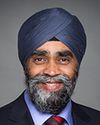I'm glad you asked that question, because that is the key focus of our department on the preparedness side.
I want to outline that it started with floods in March and went into wildfires at the same time as we were having floods. In some places, like in Northwest Territories, the community was hit with extreme floods and wildfires as well. Let's not forget the hurricane.
During this time, we were focused on the response and recovery. Now we're also looking at analyzing all the different areas where we had extreme disasters, to see what types of things we can do for prevention. There's mitigation. Adaptation's also going to be important. We're talking to the mayors about what type of training will be needed from their municipal perspective, and also what things they need to do differently.
In some cases, like West Kelowna, there's obviously a discussion going on in terms of firebreaks. As homes are being built closer to forests, what types of firebreaks are needed? Municipalities are doing their calculations.
Even in rural communities, there's a greater conversation on infrastructure. Communication lines are a key component, as are roads and railways for supply lines. All that work is currently going on.
We know that climate-induced disasters are potentially going to be worse. How do we look at preventing or reducing the impact so our response doesn't have to be as strong as it is? We're going to have to adjust what we're doing. That's what we're focused on now: What things can we prevent?
In terms of the response side of things, the key thing is putting the right resource in the right place at the right time.
How we manage this is having a situational awareness. For example, imagine a wildfire situation like what was taking place in the Northwest Territories and Yellowknife. At each level, we're already stacking up resources to make sure there is no gap in the response. That will always be there, but what we're doing now is about what could have been done or what we need to do to prevent the impact on a small town or prevent the evacuation. That's going to be the key.




